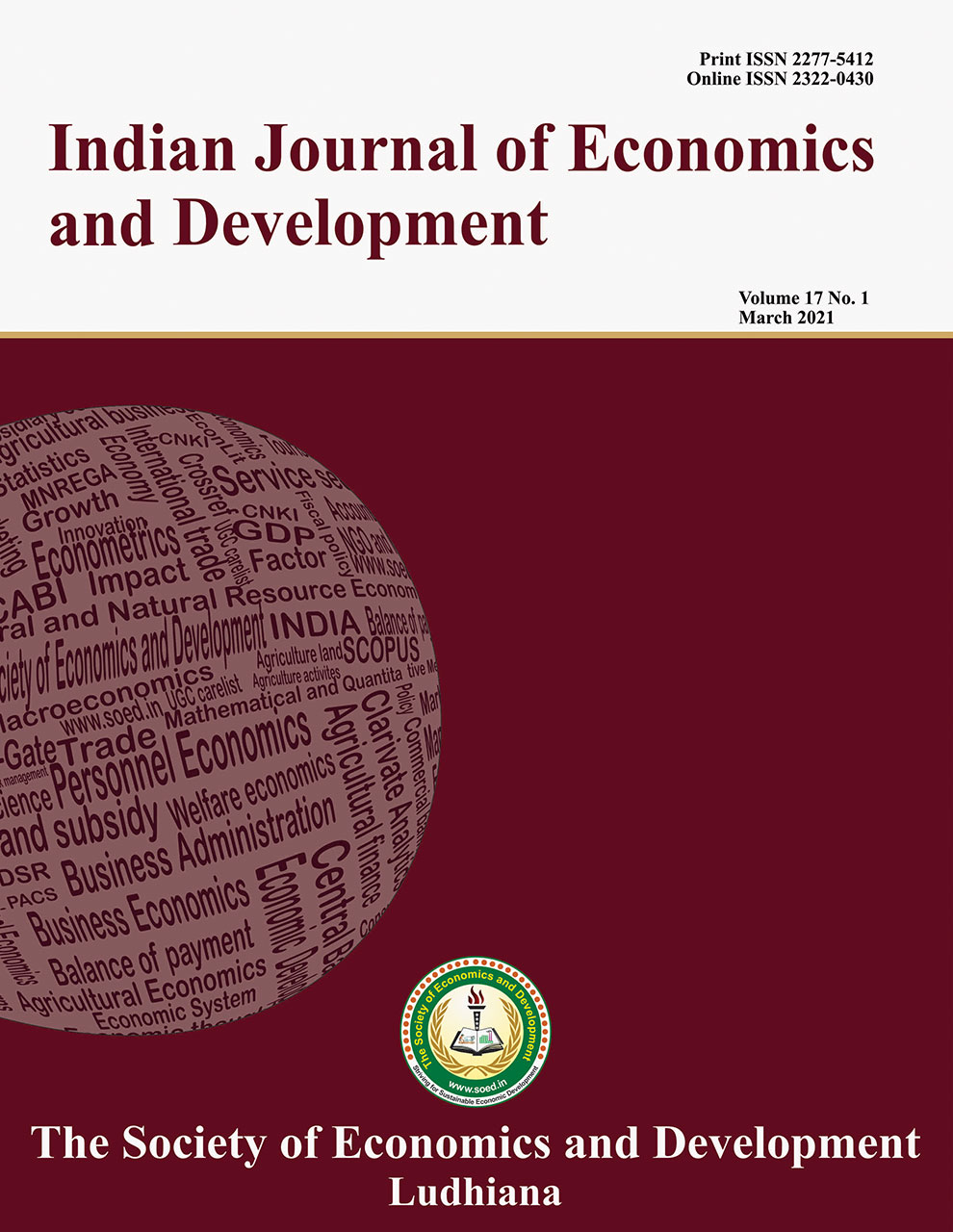Rice Production in Punjab: Diversification of Some Rice Area Essential for Sustainable Agriculture

Price: ₹ 500
Author: Jaswinder Kaur1* and Shakuntla Gupta2
Author Address: Assistant Professor, University College, Chunni Kalan, District Fatehgarh Sahib-140 406
Keywords: Diversification, groundwater, over-exploitation, sustainability.
JEL Codes: Q26, Q25, O13, Q56.
Abstract
Punjab has emerged as an important rice-producing state in the country. The state with 1.53 per cent of the geographical area of the country produces more than 11 per cent of total rice production in the country. During the pre-globalization era, the production of rice in Punjab increased more than 10 times due to an increase in area and yield. The growth of a rice crop at such a high rate over 20 years in Punjab is indeed a rare phenomenon in the history of agricultural development in the world. During the post-globalization era, growth in area and yield slowed down as it already reached a plateau. Due to extensive cultivation of rice in Punjab, the state has been over-exploiting the groundwater, more than its recharge. Most of the tube-well dominated districts of the state, witnessed the fall in water table more than 20 to 30 cm per year. To dispose of the paddy straw, the farmers of Punjab generally opt for burning it. This practice of burning of paddy straw besides nutrient loss is posing a serious problem for the public health and transportation system. Rice has now become a problematic crop for Punjab state due to its ill effects on its natural resources, that is, the water and soil environmental degradation. The Punjab Agricultural University experts and other committees estimated that the total groundwater recharge from all sources can sustain/support only 16-17 lakh ha of paddy in Punjab. The area under the crop increased to 29 lakh ha which was unsustainable in the long run. The area under rice in Punjab should be stabilised at 16-17 lakh ha and the remaining paddy area should be shifted to other crops like pulses, oilseeds, maize, fruits and vegetables, etc. requiring less water, to achieve proper water balance. Thus diversification of some area from paddy is in the interest of Punjab farmers, State government and the Central government for long term food security on a sustainable basis.
Description
Indian Journal of Economics and Development
Volume 15 No. 3, 2019, 435-442
DOI: 10.5958/2322-0430.2019.00054.4
Indexed in Clarivate Analytics (ESCI) of WoS
Jaswinder Kaur1* and Shakuntla Gupta2
1Assistant Professor, University College, Chunni Kalan, District Fatehgarh Sahib-140 406
2Professor, Department of Economics, Punjabi University, Patiala-147002
*Corresponding author’s email: apjaswinderkaur@gmail.com



